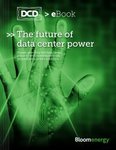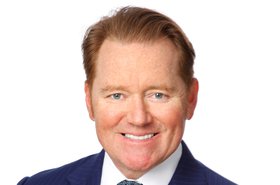Microgrids have become a warm and fuzzy part of the discourse about the transition to net zero. But there is a hard reality underlying them: adopting a microgrid is a step towards becoming a power utility in your own right.
That is a step many data centers won’t take lightly - because great power means great responsibility. Steve Ditko and Stan Lee said that in Spider-man, but for data centers it is true in a much more literal way when they step up to generate power in its own right.
From power network to microgrid
Data centers are host to a complex electrical power network, including batteries storing energy in the UPS for continuity, and the racks and O&M equipment where the energy is consumed.
Facilities have also always included power generation - most usually in the form of diesel generators for backup. Facilities are increasingly changing these for fuel cells, powered by hydrogen or methane, or teaching the generators to drink renewable HVO instead of fossil fuel.
Sites are also sprouting wind turbines and solar panels which contribute energy to the data center, or potentially to the outside world through the grid. That outward flow can also happen when UPS batteries are made available for “fast frequency response,” bolstering the grid in times of high power demand.
In recent times, we’ve heard this referred to as a “microgrid.” National grids include power generation, distribution, and consumption. They also have management. They have controllers that keep the thing running and serving all the consumers.
Data centers include most of this on a small scale, so it’s often referred to as a microgrid. But to truly be a microgrid, it should be a domain, where the local power system can operate autonomously, perhaps even independently, of the local grid. It should also have a controller.
When the utility can't provide
Behind the current popularity of microgrids is the fear that local utility grids are not going to always be as reliable as the data center desires them to be.
That’s a real fear. In developing countries, grids are still being established and made fully reliable. Even in quite “well-off” countries like South Africa, there are well-publicized electricity problems, which make that more than a fear, but a certainty.
So microgrids are going to be seen by many as a necessary step. But they are not a magic solution. If you adopt that option, you are deciding that the utility grid is not going to be good enough for you.
Maybe it’s not reliable enough, maybe it is not green enough, or maybe not timely enough. In many cases, the utility is simply not able to distribute the power where and when you need it. Data center hubs like Northern Virginia, Dublin, Singapore, and London aggregate vast amounts of capacity demand in one place. Queues for capacity can be long.
Given that, a lot of data center providers are deciding that they can do a better job than the local utility grid.
It’s entirely possible that’s true. Most data centers are already part of the way there, having invested in backup power generation that can make up for short-term problems on the utility grid.
But going to a microgrid is a bigger step. It involves becoming an actual electricity provider. Depending what country you are in, this may add regulatory hurdles. It will mean a more demanding planning application and approval process.
In areas with high demand, that process may still be quicker than waiting for connection to the public grid, so some are moving towards fully independent microgrids.
Do you want to take this step?
But moving into power generation is not a core business for the data center sector. Alongside the potential benefits in financial terms, you will have to consider the costs. You will have to develop a whole new set of expertise within your organization.
It may be more likely that you will find a partner who can design and operate your microgrid. Essentially, this becomes a bet that a small grid operator on your premises will be a better, more reliable, and more responsive partner than the local public utility.
And, no matter the lure of becoming independent of the local grid, you will not able to operate in isolation. Your data center may want to call on the local grid, perhaps reversing the old roles, and using the grid as a backup to the primary power supply you now own.
Your microgrid will also want the utility grid as a partner, to make good use of any surplus energy you generate. It’s worth suggesting here that, with enough storage, your microgrid should be able to make good money by storing that surplus energy and choosing when to offer it.
Win friends and influence
This sort of interaction can seem like a burdensome overhead. As we said, you never expected energy generation to be a profit sector in your business.
But actually, this interaction with the public utility may turn out to be the best motivation for adopting the microgrid.
As data center hubs become a vastly significant industrial operator in their local environment, they are facing pushback from local communities who resent their demands for land and power.
Turn your data center into a power station, a responsive power source, and you will generate more than electricity. Your microgrid could ease demands on local grids, maybe even avoiding new generators and pylons.
As well as power, you could produce the goodwill that the data center sector needs if it is to keep growing the way it hopes.






